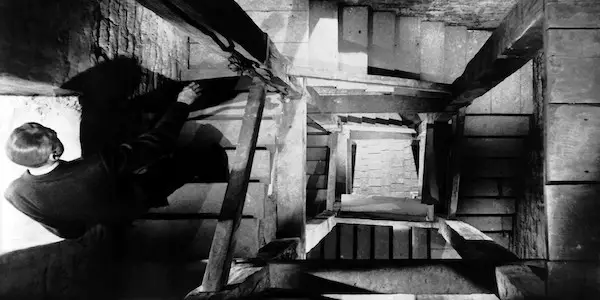Let’s Decipher VERTIGO: Myth & Legend (Video)
Laura Birnbaum is a proud film critic and writer from…
Hello cinephiles!
Welcome back to Decipher! In our last episode, we dove into the role of nature in Robert Eggers‘ The Witch, and here in episode two, we explore the myths and legends that connect to Alfred Hitchc*ck’s Vertigo. It has been nearly 60 years since the film was released, and it is every bit as ethereal, profound, and viscerally affecting as it was when it came out.

When I was preparing for episode two of Decipher, I had primarily set out to accumulate information surrounding the meaning behind the many colors, shapes, and movements within Vertigo’s frames. That information alone quickly filled a Moleskine notebook and currently occupies a concerning amount of hard drive space on my computer, but there was something still left unsaid. This “something” had been brought to light in late night conversations with strangers and friends, and presented itself in my post-Vertigo-re- viewing thoughts (commonly haunting me at a most unholy 3am hour).
When it came down to it, the call to correlate Vertigo with other works of art, history – and most specifically, mythology – was stronger than the rest. So, let’s explore together, shall we? Let’s look to “Tristan & Isolde”, “Pygmalion”, and “Orpheus” to help us decipher this beloved film that continues to wander and haunt its audience over half a century later. After all, the myths that influenced it have been wandering in the woods for much longer.
Participate in the discussion in the comments below!
Does content like this matter to you?
Become a Member and support film journalism. Unlock access to all of Film Inquiry`s great articles. Join a community of like-minded readers who are passionate about cinema - get access to our private members Network, give back to independent filmmakers, and more.
Laura Birnbaum is a proud film critic and writer from Chicago. When she's not watching independent horror films, she's likely smoking a cigar on a rooftop somewhere, thinking about which indie horror film to watch next.













